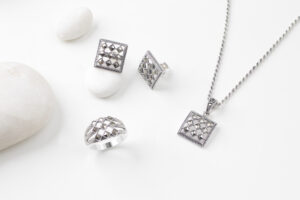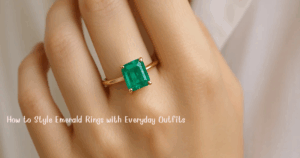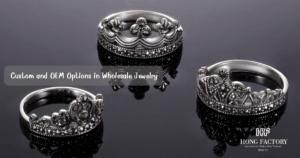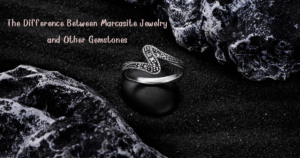In the world of wholesale jewelry, two dominant supply models are often debated: Ready-to-Ship (RTS) and Made-to-Order (MTO). Each has unique advantages, cost structures, lead times, and risks. Choosing between them or balancing both is critical to operational success and customer satisfaction.
This comprehensive guide compares both wholesale models across key dimensions: speed, customization, cost, flexibility, inventory risk, and long-term growth. Whether you’re a buyer, supplier, or retail brand, understanding the nuances of RTS and MTO can help you make smarter sourcing decisions..
Ready-to-Ship vs Made-to-Order: Which Wholesale Model Wins in 2025?

1. What is Ready-to-Ship (RTS)?
RTS products are pre-manufactured and stored in inventory, ready to be dispatched upon order. These are typically:
- Standardized designs
- Available in bulk or limited runs
- Shipped within 1–3 business days
Who uses RTS?
- Retailers needing fast replenishment
- Pop-up stores and flash sales
- E-commerce brands with unpredictable traffic
2. What is Made-to-Order (MTO)?
MTO involves producing items only after an order is received. The customer may select:
- Gemstone color and size
- Ring or chain dimensions
- Custom engraving or branding
MTO orders usually take 2–6 weeks depending on complexity and production capacity.
Who uses MTO?
- Boutiques seeking exclusivity
- B2B clients with private label needs
- Designers offering personalized experiences
3. Speed-to-Market: RTS Wins on Urgency
RTS clearly leads when time is a factor:
- Ideal for new store launches, urgent restocks, and seasonal peaks
- Reduces lost sales due to stock outs
- Enables quicker reaction to trend spikes
MTO, while slower, allows flexibility to launch curated campaigns when timeline isn’t tight.

4. Customization: MTO Wins on Personalization
RTS offers minimal flexibility:
- Basic size or color variants
- Little to no brand integration
MTO enables high-level customization:
- OEM options (custom logo, packaging)
- Unique design commissions
- Tailored gemstone or metal preferences
For luxury positioning or niche targeting, MTO adds distinct value.
5. Cost Structure: RTS Wins on Unit Pricing
RTS models benefit from economies of scale:
- Mass production reduces cost per unit
- Lower labor and handling costs per item
MTO typically has:
- Higher labor intensity
- Specialized skills (e.g., hand-setting stones)
- Less price negotiation due to smaller runs
However, MTO may justify premium pricing due to exclusivity.
6. Inventory Risk: MTO Reduces Holding Burden
RTS requires upfront investment:
- Tied-up capital in stock
- Storage, insurance, and risk of obsolescence
MTO operates lean:
- No excess stock
- Easier to manage trends and avoid overproduction
For businesses with limited space or working capital, MTO provides better risk control.

7. Product Testing: RTS Enables A/B Launching
Want to test which gemstone color performs best? RTS gives you that flexibility:
- Run small test batches
- Track sell-through rate
- Reorder quickly if successful
MTO doesn’t allow real-time reaction without delay, making trend validation slower.
8. Customer Experience: MTO Enhances Brand Value
Today’s consumers value uniqueness. MTO can be marketed as:
- “Designed for you”
- “Ethically made upon request”
- “Crafted with meaning, not mass-produced”
This storytelling enhances brand equity and supports premium positioning.
9. Flexibility: RTS for Speed, MTO for Adaptation
RTS is inflexible once produced:
- Can’t change design after production
- Overstock issues if trends shift suddenly
MTO adapts easily:
- Modify design specs over time
- Align output with current market demands
Businesses launching trend-driven collections may prefer MTO for dynamic shifts.
10. MOQ and Accessibility
RTS typically requires:
- Higher MOQs to justify stockholding
- Full payment upfront
MTO often allows:
- Lower MOQs per SKU
- Tiered payment options (e.g., deposit + balance)
This makes MTO appealing for smaller businesses and first-time buyers.

11. Sustainability and Waste Management
MTO is naturally more sustainable:
- No excess stock to landfill
- On-demand production aligns with ethical sourcing trends
RTS sustainability depends on efficient forecasting and responsible surplus management.
12. Real-World Use Case: Combining Both Models
Smart brands integrate both:
- Use RTS for timeless bestsellers (studs, chains, rings)
- Use MTO for seasonal or trend-based capsules
- Balance inventory for fast cash flow and long-term branding
Hybrid sourcing builds resilience and responsiveness.
13. Technology’s Role in Model Optimization
Modern tech simplifies both models:
- Inventory AI forecasts RTS demand
- Product configurators streamline MTO orders
- ERP systems sync timelines, production, and sales
Tech tools eliminate many traditional tradeoffs.
14. Supplier Selection: What to Look For
For RTS:
- Fast dispatch times
- Accurate stock listings
- Transparent MOQ policies
For MTO:
- Clear customization process
- Consistent turnaround time
- Quality control and proofing
Choose partners who support communication and long-term reliability.
Which Wholesale Model Wins?
There’s no universal winner the right model depends on your brand strategy. Choose RTS when speed, scale, and low cost matter most. Choose MTO when you prioritize customization, exclusivity, and sustainable growth.
In 2025’s fast-evolving market, flexibility is key. The real winner is the wholesale business that knows when to use RTS, when to invest in MTO, and how to blend both for maximum resilience and profitability.




